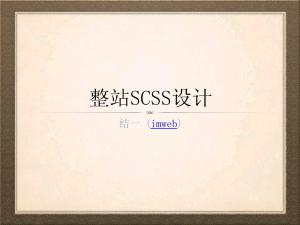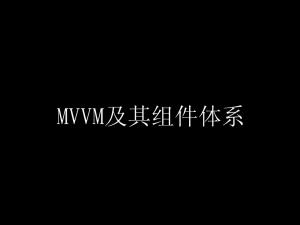- 本月热门
-
 漫谈Web前端的『组件化』 by 郑海波@网易
漫谈Web前端的『组件化』 by 郑海波@网易 -
 ANGULAR2 vs REACT(简介及框架比较) by 500Tech
ANGULAR2 vs REACT(简介及框架比较) by 500Tech -
 21CN前端开发团队之发展史 by 蔡立勋
21CN前端开发团队之发展史 by 蔡立勋 -
 运维开发前端转型之道—Angularjs by 林香鑫@网易
运维开发前端转型之道—Angularjs by 林香鑫@网易 -
 Docker 1.10 Security Improvements(Docker安全改进) by Diogo Mónica
Docker 1.10 Security Improvements(Docker安全改进) by Diogo Mónica -
 整站scss设计 by 结一
整站scss设计 by 结一 -
 Red Hat OpenStack Platform 7 Training
Red Hat OpenStack Platform 7 Training -
 同一个世界,同一个Web by 刘宇@工信部电信研究院
同一个世界,同一个Web by 刘宇@工信部电信研究院 -
 积木系统-工业化运营的尝试 by jerojiang
积木系统-工业化运营的尝试 by jerojiang -
 MVVM及其组件体系_angular_react_vue by 杨文坚
MVVM及其组件体系_angular_react_vue by 杨文坚
第1页
Haskell中的类型与类型系统
网易杭州研究院 张淞 @阅千人而惜知己
网易杭州研究院 张淞 @阅千人而惜知己
第2页
2015-6-2
第3页
2015-6-2
第4页
编程语言分类
编程语言
Domain Specific Language
(特定领域语言)
General Purpose programming language (通用编程语言)
SQL, HTML
命令式语言
C/C++, Java, Python, C#
混合范式型语言
Scala, OCaml, F#
函数型语言
Haskell, Coq, Agda, Lisp, Clojure, ML
编程语言
Domain Specific Language
(特定领域语言)
General Purpose programming language (通用编程语言)
SQL, HTML
命令式语言
C/C++, Java, Python, C#
混合范式型语言
Scala, OCaml, F#
函数型语言
Haskell, Coq, Agda, Lisp, Clojure, ML
第5页
什么是Haskell?
一个强类型的、纯的、惰性的函数式编程语言 第一个编译器的版本于1990年4月发布 每年有相当多的博士在改进它,进化速度非常快 see http://www.haskell.org
一个强类型的、纯的、惰性的函数式编程语言 第一个编译器的版本于1990年4月发布 每年有相当多的博士在改进它,进化速度非常快 see http://www.haskell.org
第6页
什么是Haskell?
每个值都有严格的类型,不能任意转型, 也没有隐式转型。
对于纯函数只要输入确定结果必然确定, 与计算机当前的状态无关。
Haskell可以严格求值,7.10前需要我们 手动控制,但7.12中会有-XStrict扩展
每个值都有严格的类型,不能任意转型, 也没有隐式转型。
对于纯函数只要输入确定结果必然确定, 与计算机当前的状态无关。
Haskell可以严格求值,7.10前需要我们 手动控制,但7.12中会有-XStrict扩展
第7页
演示
用SMT Solver解百鸡问题 公鸡每只5元,母鸡每只3元,小鸡3只1元,用100元钱 买100只鸡,求公鸡、母鸡、小鸡各有多少只。
函数反应式编程模拟小球下落
用SMT Solver解百鸡问题 公鸡每只5元,母鸡每只3元,小鸡3只1元,用100元钱 买100只鸡,求公鸡、母鸡、小鸡各有多少只。
函数反应式编程模拟小球下落
第8页
Haskell中的主要概念
Kind(多态kind、实体kind、data kind)
类型(多态类型、类型类限定类型、实体类型)
函数/运算符(位置、结合性、
优先级)
值
类型类
Kind(多态kind、实体kind、data kind)
类型(多态类型、类型类限定类型、实体类型)
函数/运算符(位置、结合性、
优先级)
值
类型类
第9页
Haskell中的值
‘1’, True 函数
not :: Bool -> Bool id :: a -> a show :: Show a => a -> String 运算符只是有优先级的函数,它们可以相互转化 (+) 1 2与1 + 2相同 mod 19 7与19 `mod` 7相同
‘1’, True 函数
not :: Bool -> Bool id :: a -> a show :: Show a => a -> String 运算符只是有优先级的函数,它们可以相互转化 (+) 1 2与1 + 2相同 mod 19 7与19 `mod` 7相同
第10页
Haskell中的类型
基本类型:Int, Integer, Char, type String = [Char] 基于基本类型的函数
ord :: Char -> Int chr :: Int -> Char
多态类型:[a], Maybe a, (a,b) 多态类型函数:
id :: a -> a, const :: a -> b -> a length :: [a] -> Int size :: Tree a -> Int fst :: (a,b) -> a
所以的值都有精确的类型, ‘1’ :: Char, True :: Bool
基本类型:Int, Integer, Char, type String = [Char] 基于基本类型的函数
ord :: Char -> Int chr :: Int -> Char
多态类型:[a], Maybe a, (a,b) 多态类型函数:
id :: a -> a, const :: a -> b -> a length :: [a] -> Int size :: Tree a -> Int fst :: (a,b) -> a
所以的值都有精确的类型, ‘1’ :: Char, True :: Bool
第11页
代数类型
枚举类型 data Bool = False | True
deriving (Eq, Show, Ord, Enum, Bounded, Read) 参数化类型 类似于Java中的泛型 data Maybe a = Nothing | Just a
deriving (Eq, Show, Ord, Read) -- 解决了Tony Hoare的十亿美元的null问题! 递归类型 data Nat = Zero | Succ Nat deriving (Eq, Show, Ord, Read) 构造类型 data Pair a b = Pair a b -- 类型构造器与数据构造器名字一样 data Person = Person {name :: String, age:: Int}
data List a = Nil | Cons a (List a) -- data [] a = [] | a : [a] deriving (Eq, Show, Ord, Read)
枚举类型 data Bool = False | True
deriving (Eq, Show, Ord, Enum, Bounded, Read) 参数化类型 类似于Java中的泛型 data Maybe a = Nothing | Just a
deriving (Eq, Show, Ord, Read) -- 解决了Tony Hoare的十亿美元的null问题! 递归类型 data Nat = Zero | Succ Nat deriving (Eq, Show, Ord, Read) 构造类型 data Pair a b = Pair a b -- 类型构造器与数据构造器名字一样 data Person = Person {name :: String, age:: Int}
data List a = Nil | Cons a (List a) -- data [] a = [] | a : [a] deriving (Eq, Show, Ord, Read)
第12页
基于这些类型的函数
每个模式实际上是匹配的构造器与参数。
not :: Bool -> Bool not False = True not True = False
fromJust :: Maybe a -> a fromJust (Just x) = x fromJust Nothing = error “cannot get value from nothing”
error的类型是什么?
每个模式实际上是匹配的构造器与参数。
not :: Bool -> Bool not False = True not True = False
fromJust :: Maybe a -> a fromJust (Just x) = x fromJust Nothing = error “cannot get value from nothing”
error的类型是什么?
第13页
基于这些类型的函数
每个模式实际上是匹配的构造器与参数。
not :: Bool -> Bool not False = True not True = False
fromJust :: Maybe a -> a fromJust (Just x) = x fromJust Nothing = error “cannot get value from nothing”
error的类型是什么? error :: String -> a
每个模式实际上是匹配的构造器与参数。
not :: Bool -> Bool not False = True not True = False
fromJust :: Maybe a -> a fromJust (Just x) = x fromJust Nothing = error “cannot get value from nothing”
error的类型是什么? error :: String -> a
第14页
基于这些类型的函数
add :: Nat -> Nat -> Nat add Zero n = n add (Succ n) m = add n (Succ m)
foo :: Person -> String foo (Person n s) = n ++ if s > 18
then “ is an adult” else “ is a child”
sum :: [Int] -> Int sum [] = 0 sum (x:xs) = x + sum xs
add :: Nat -> Nat -> Nat add Zero n = n add (Succ n) m = add n (Succ m)
foo :: Person -> String foo (Person n s) = n ++ if s > 18
then “ is an adult” else “ is a child”
sum :: [Int] -> Int sum [] = 0 sum (x:xs) = x + sum xs
第15页
类型类
相当于多种类型的公共属性 (==) :: Eq a => a -> a -> Bool
类型类间的有依赖关系 class Eq a => Ord a
(>=),(>),(<=),(<) :: Ord a => a -> a -> Bool
show :: Show a => a -> String 函数的重载 (+) :: Num a => a -> a -> a
Int, Integer, Double, Float都可相加
Show, Eq, Ord, Enum, Read, Bounded
相当于多种类型的公共属性 (==) :: Eq a => a -> a -> Bool
类型类间的有依赖关系 class Eq a => Ord a
(>=),(>),(<=),(<) :: Ord a => a -> a -> Bool
show :: Show a => a -> String 函数的重载 (+) :: Num a => a -> a -> a
Int, Integer, Double, Float都可相加
Show, Eq, Ord, Enum, Read, Bounded
第16页
定义类型类
class Eq a where (==) :: a -> a -> Bool (/=) :: a -> a -> Bool (==) x y = not (x /= y) (/=) x y = not (x == y) {-# MINIMAL (==) | (/=) #-}
class Show a where show :: a -> String
data Person = Person Name Int instance Eq Person where
(Person n1 i1) == (Person n2 i2) = n1 == n2 && i1 == i2 instance Show Person where
show (Person name age) = name ++ show age
class Eq a where (==) :: a -> a -> Bool (/=) :: a -> a -> Bool (==) x y = not (x /= y) (/=) x y = not (x == y) {-# MINIMAL (==) | (/=) #-}
class Show a where show :: a -> String
data Person = Person Name Int instance Eq Person where
(Person n1 i1) == (Person n2 i2) = n1 == n2 && i1 == i2 instance Show Person where
show (Person name age) = name ++ show age
第17页
Functor函子类型类中的fmap函数
data List a = Nil | Cons a (List a) class List<T>{
T e = null; List<T> list = null; } data Tree a = Leaf | Node a (Tree a) (Tree a) list :: List Int list = Cons 10 (Cons 11 (Cons 6 (Cons 1 Nil)))
tree :: Tree Int tree = Node 10 (Node 11 Leaf Leaf) (Node 6 (Node 1 Leaf Leaf) Leaf)
data List a = Nil | Cons a (List a) class List<T>{
T e = null; List<T> list = null; } data Tree a = Leaf | Node a (Tree a) (Tree a) list :: List Int list = Cons 10 (Cons 11 (Cons 6 (Cons 1 Nil)))
tree :: Tree Int tree = Node 10 (Node 11 Leaf Leaf) (Node 6 (Node 1 Leaf Leaf) Leaf)
第18页
Functor函子类型类中的fmap函数
class Functor f where fmap :: (a -> b) -> f a -> f b
instance Functor List where fmap f Nil = Nil fmap f (Cons a l) = Cons (f a) (fmap f l)
instance Functor Tree where fmap f Leaf = Leaf fmap f (Node v l r) = Node (f v) (fmap f l) (fmap
f r) 可以使用DeriveFunctor编译器扩展自动生成
class Functor f where fmap :: (a -> b) -> f a -> f b
instance Functor List where fmap f Nil = Nil fmap f (Cons a l) = Cons (f a) (fmap f l)
instance Functor Tree where fmap f Leaf = Leaf fmap f (Node v l r) = Node (f v) (fmap f l) (fmap
f r) 可以使用DeriveFunctor编译器扩展自动生成
第19页
数学对于Functor的指导意义
F(g) ◦ F(f) = F(g ◦ f) fmap g . fmap f = fmap (g.f) fmap g (fmap f v) = fmap (g.f) v {-# RULE “fmap”
forall g f v fmap g (fmap f v) = fmap (g.f) v #-} fmap (+10) (fmap (*2) [1..10]) = fmap ((+10).(*2)) [1..10]
F(g) ◦ F(f) = F(g ◦ f) fmap g . fmap f = fmap (g.f) fmap g (fmap f v) = fmap (g.f) v {-# RULE “fmap”
forall g f v fmap g (fmap f v) = fmap (g.f) v #-} fmap (+10) (fmap (*2) [1..10]) = fmap ((+10).(*2)) [1..10]
第20页
int[] arr for(int i = 0 ; i < arr.length; i++){
arr[i] = arr[i] * 2; }
for(int i = 0 ; i < arr.length; i++){ arr[i] = arr[i] + 10;
}
arr[i] = arr[i] * 2; }
for(int i = 0 ; i < arr.length; i++){ arr[i] = arr[i] + 10;
}
第21页
类型类与Java的接口的不同
1、接口在Haskell相当于是一个字典,函数调用会根据不同的类型 来传递。多几个类型类限定相当于是多传入了几个字典。Java中要 把接口合并起来有些啰嗦。
2、由于Haskell的类型是代数数据类型,即全部可以用单位元、类 型加法、类型乘法、类型复合来定义,所以类型类实例可以自动实现 能力极强,而且方法特别多——通用编程、摒弃模板化编程、元编程。
3、还有很多其他不同。
演示:处理JSON数据的aeson库、漂亮打印的generic-pretty 库,类型的序列化。
1、接口在Haskell相当于是一个字典,函数调用会根据不同的类型 来传递。多几个类型类限定相当于是多传入了几个字典。Java中要 把接口合并起来有些啰嗦。
2、由于Haskell的类型是代数数据类型,即全部可以用单位元、类 型加法、类型乘法、类型复合来定义,所以类型类实例可以自动实现 能力极强,而且方法特别多——通用编程、摒弃模板化编程、元编程。
3、还有很多其他不同。
演示:处理JSON数据的aeson库、漂亮打印的generic-pretty 库,类型的序列化。
第22页
interface Show<T>{ String show (T a);} interface Eq<T>{ boolean eq(T a);} interface ShowEq<T> extends Eq<T>, Show<T>{} class Person implements Eq<Person>, Show<Person>{
String name ; int age; Person(String name, int age){
this.name = name; this.age = age;} public boolean eq(Person a) {
return this.name.equals(a.name) && this.age == a.age;} public String show() {
return this.name + “ ” + this.age; } } foo :: (Show a, Eq a) => a -> a -> (Bool, String)
String name ; int age; Person(String name, int age){
this.name = name; this.age = age;} public boolean eq(Person a) {
return this.name.equals(a.name) && this.age == a.age;} public String show() {
return this.name + “ ” + this.age; } } foo :: (Show a, Eq a) => a -> a -> (Bool, String)
第23页
类型系统与Java的不同
1、Java中没有“高阶泛型” 高阶Kind class Mk<T,K>{ T<K> m ; } new Mk<Vector, Integer>() new Mk<ArrayList, Node>()
2、没有“多态泛型” Kind多态
1、Java中没有“高阶泛型” 高阶Kind class Mk<T,K>{ T<K> m ; } new Mk<Vector, Integer>() new Mk<ArrayList, Node>()
2、没有“多态泛型” Kind多态
第24页
类型的Kind
类型的类型为kind,类型把值分类,class给类型赋予了属性,kind把类 型分类。*代表一个实体的kind如:
3 :: Int , Int :: * Just 3 :: Maybe Int, Maybe :: * -> *, Maybe Int :: *
-- 只有kind为*的类型下面才有值 -- 没有一个值的类型是Maybe,只有Maybe Int或Maybe Char等 Either :: * -> * -> * -- 同理也没有一个值的类型是Either (,) :: * -> * -> * -- 元组类型的构造器
类型的类型为kind,类型把值分类,class给类型赋予了属性,kind把类 型分类。*代表一个实体的kind如:
3 :: Int , Int :: * Just 3 :: Maybe Int, Maybe :: * -> *, Maybe Int :: *
-- 只有kind为*的类型下面才有值 -- 没有一个值的类型是Maybe,只有Maybe Int或Maybe Char等 Either :: * -> * -> * -- 同理也没有一个值的类型是Either (,) :: * -> * -> * -- 元组类型的构造器
第25页
高阶Kind
data RoseTree a = RLeaf a | RNode a [RoseTree a] -- RNode a ([] (RoseTree a))
>:kind [] * -> * data BinTree a = BLeaf a
| BNode a (Pair (BinTree a)) data Pair a = MkPair a a -- (a,a) >:kind Pair * -> *
data RoseTree a = RLeaf a | RNode a [RoseTree a] -- RNode a ([] (RoseTree a))
>:kind [] * -> * data BinTree a = BLeaf a
| BNode a (Pair (BinTree a)) data Pair a = MkPair a a -- (a,a) >:kind Pair * -> *
第26页
高阶Kind
data Tree k a = Leaf a | Node a (k (Tree k a))
type RoseTree a = Tree [] a type BinTree a = Tree Pair a type AnnTree a = Tree AnnPair a
data Pair a = MkPair a a data AnnPair a = AnnPair String a a >:kind Tree (* -> *) -> * -> *
data Tree k a = Leaf a | Node a (k (Tree k a))
type RoseTree a = Tree [] a type BinTree a = Tree Pair a type AnnTree a = Tree AnnPair a
data Pair a = MkPair a a data AnnPair a = AnnPair String a a >:kind Tree (* -> *) -> * -> *
第27页
Kind多态 Typeable
class Typeable a where -- a :: * typeOf :: a -> String
instance Typeable Int where -- Int :: * typeOf _ = “Int”
instance Typeable Maybe where -- jQuery11020039343626808920784_1458522972659 Maybe :: * -> * solution: class Typeable2 t where
typeOf2 :: t a -> String class Typeable3 t where
typeOf3 :: t a b -> String -- 显然这个方案不好!
class Typeable a where -- a :: * typeOf :: a -> String
instance Typeable Int where -- Int :: * typeOf _ = “Int”
instance Typeable Maybe where -- jQuery11020039343626808920784_1458522972659 Maybe :: * -> * solution: class Typeable2 t where
typeOf2 :: t a -> String class Typeable3 t where
typeOf3 :: t a b -> String -- 显然这个方案不好!
第28页
Kind多态 Typeable
class Typeable (t :: k) where typeOf :: t -> String -- 但是t类型下没有值,因为它的kind为多态的k而非*,所以
会有类型错误
data Proxy (a :: k) = Proxy > :k Proxy Proxy :: k -> * class Typeable (t :: k) where
typeOf :: Proxy t -> String
instance Typeable Maybe where typeOf Proxy = “Maybe”
class Typeable (t :: k) where typeOf :: t -> String -- 但是t类型下没有值,因为它的kind为多态的k而非*,所以
会有类型错误
data Proxy (a :: k) = Proxy > :k Proxy Proxy :: k -> * class Typeable (t :: k) where
typeOf :: Proxy t -> String
instance Typeable Maybe where typeOf Proxy = “Maybe”
第29页
更多关于类型的内容
RankNType 基于类型的运算 类型的角色 依赖类型
RankNType 基于类型的运算 类型的角色 依赖类型
